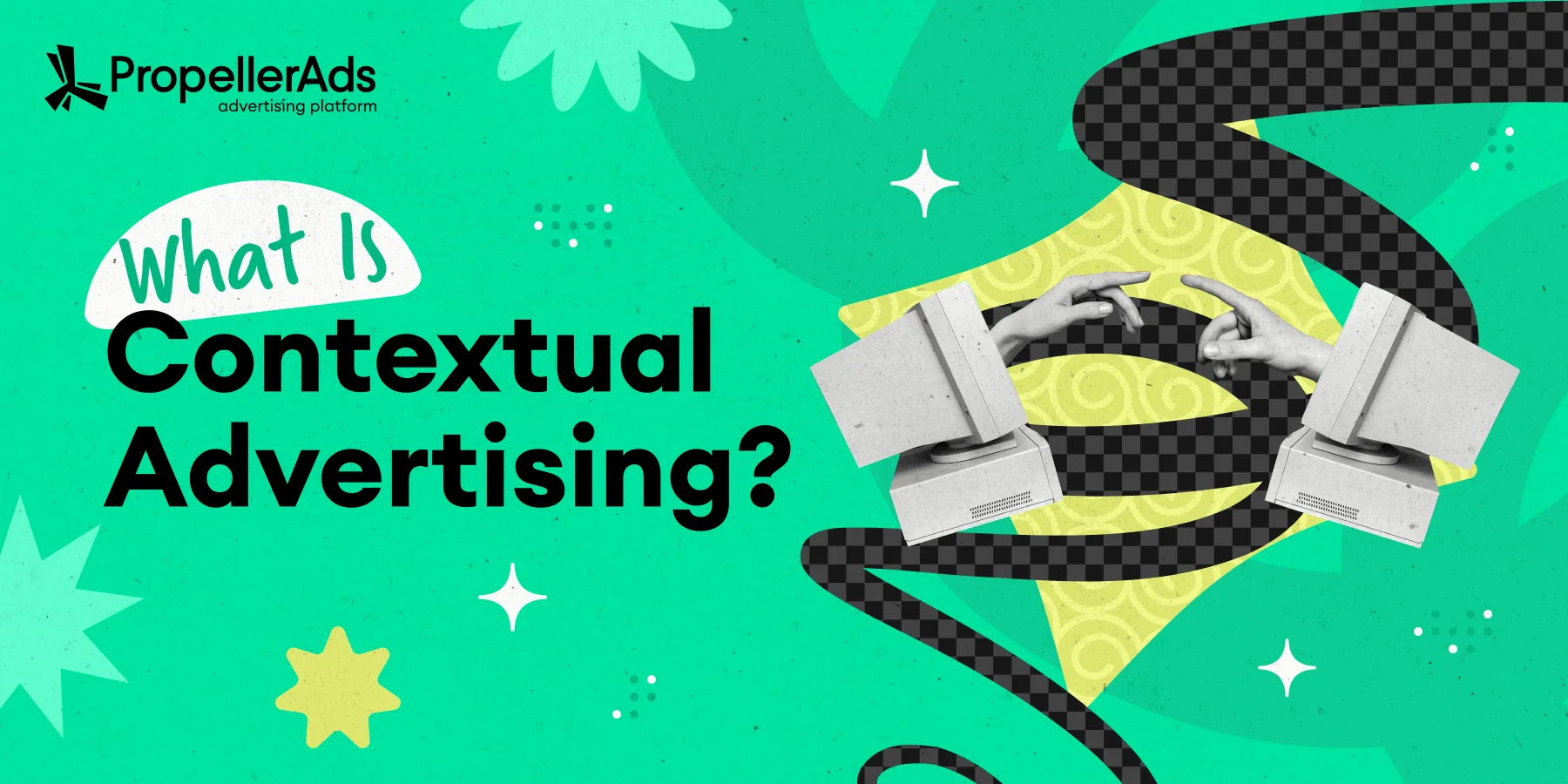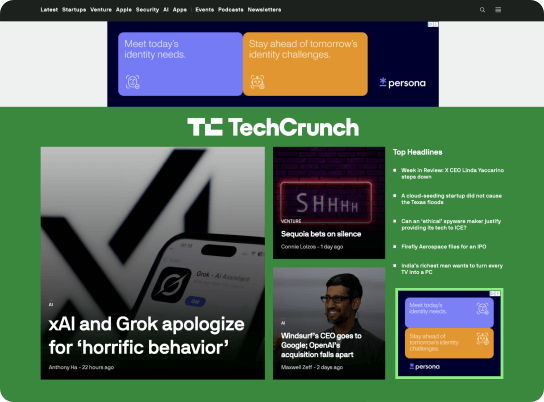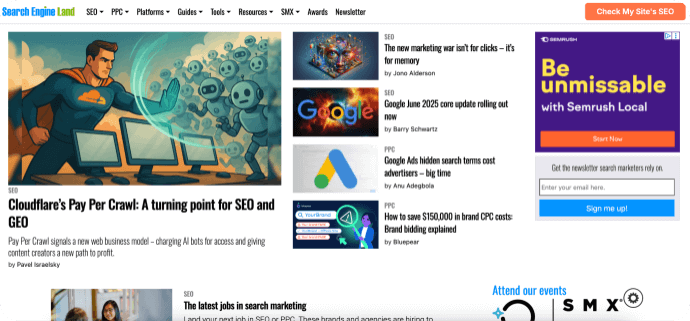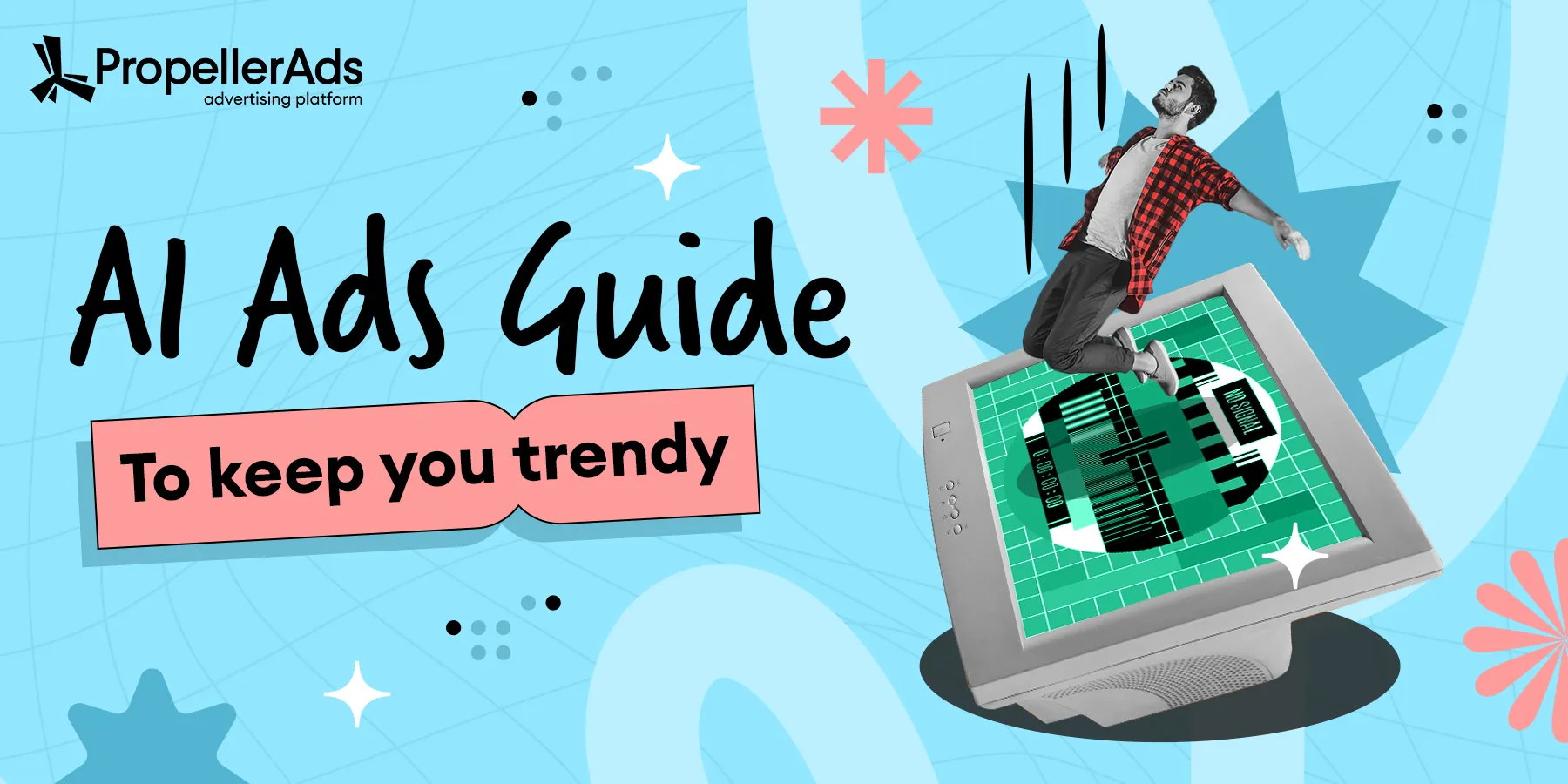What Is Contextual Advertising? Definition, Benefits, Examples

Contextual advertising is one of the most efficient strategies with its biggest strength – it feels natural. Or at least, like the secret agents are spying on you (just kidding).
So what is it? How does it work? Should you also try blending its approaches into your media buying mastery? Let’s discuss.
What is contextual advertising?
Contextual advertising is a form of online advertising where the ads shown on a web page are directly related to the content of that page. Instead of relying on personal data or user behavior, contextual ads are matched to the topic or keywords on the page you’re viewing.
For example, if someone’s reading a blog post about the best budget headphones, they might see ads for Bluetooth earbuds or audio gear, even if they’ve never searched for them before. The match happens in real time, based on the context of the page, not the person.
This approach is making a big comeback, especially as third-party cookies disappear and privacy rules get stricter. For advertisers and affiliate marketers, it’s a viable way to target impactful audiences at the right time.
How contextual advertising works
Contextual targeting advertising works by using bots that scan the content of a web page and match it with ads that are relevant to the page’s topic or keywords. It doesn’t look at who the user is, only what they’re reading or watching at that moment.
Here’s how it works in 3 steps:
- Keyword or topic selection
Advertisers define the topics or keywords they want to target. These could be broad categories (like “fitness” or “travel”) or more specific terms (like “budget headphones” or “intermittent fasting”). - Ad network analysis
The ad network scans the page’s content, including the text, metadata, image captions, and even URL structure, to understand the topic. It then compares that data to the advertiser’s targeting settings. - Ad placement
If there’s a match, the network delivers the ad on the page, typically in the form of banners, native placements, or video ads. The whole process happens in milliseconds.
Some platforms allow for more advanced controls, like choosing subcategories (e.g., “women’s running shoes” under “sportswear”) or blocking certain types of content entirely.
Example: Let’s say you run a campaign promoting a plant-based protein powder. You could target topics like “protein-rich recipes,” “home workouts,” or “healthy eating.” Your ad might appear on a blog post titled “5 Easy Smoothie Recipes for Post-Workout Recovery.”
Contextual advertising vs behavioral advertising
While they both aim to show relevant ads, contextual and behavioral advertising take very different paths to get there.
- Contextual advertising focuses on where the user is. It matches ads to the content of the page they’re currently viewing.
- Behavioral advertising focuses on the user, his previous searches, and other data to deliver ads.
Here’s a quick comparison:
| Feature | Contextual advertising | Behavioral advertising |
| Based on | Page content (topics, keywords) | User data (cookies, browsing history) |
| Privacy compliance | Fully GDPR/CCPA-friendly | Requires consent and data tracking |
| Relevance | Matches the user’s current interest | Targets based on past behavior |
| Setup complexity | Simple to implement | Requires data collection tools |
| Personalization depth | Surface-level (content-based) | Deeper (user-specific) |
| Risk of ad fatigue | Lower | Higher, especially with retargeting |
Example:
- Contextual: A visitor reading a page about DSLR cameras sees an ad for camera lenses.
- Behavioral: That same visitor browsed for hiking boots yesterday, and now sees hiking boot ads even while reading about cameras.
In short: contextual ads are about the moment, while behavioral ads are about the user’s past. That makes contextual a powerful (and privacy-safe) option, especially as third-party cookies fade out.
Benefits of contextual advertising
Contextual targeting advertising is gaining fresh momentum in a world that’s moving away from personal data tracking. Let’s take a look at the main contextual advertising benefits, especially for affiliate marketers and performance-focused brands.
- Privacy-friendly by design
Contextual ads don’t rely on cookies or personal user data. That makes them fully compliant with GDPR, CCPA, and other privacy laws. - Brand safety
One key value contextual advertising brings to marketers is brand safety. Your ads only appear alongside relevant, vetted content.
- Easier to run
Compared to behavioral campaigns, contextual targeting is simpler to set up. You don’t need custom audiences, user tracking, or expensive data providers. All you need is well-matched keywords and topics. - Relevant right now
Contextual ads speak to what the user is doing at the moment. If someone is reading about travel hacks, they’re more likely to click on a flight deal than something they searched for last week. - Better control over ad placement
With contextual targeting, you can choose where your ads appear and avoid placements that could hurt your brand. - Less ad fatigue
Because contextual ads are based on the content, not the user, they avoid the “creepy” feeling of behavioral retargeting. That means users are less likely to tune them out and more likely to click.
Disadvantages to consider
Advertising contextual to the page content has a lot going for it, but it’s not perfect. Here are a couple of trade-offs to keep in mind:
- Less precise targeting
Because contextual ads are based on page content, not user behavior, they can sometimes miss the mark. For example, someone reading a blog about luxury watches might not actually be looking to buy one. With no user history to pull from, intent isn’t always clear.
- Depends on page quality
The effectiveness of contextual ads often depends on how well a web page is written or structured. If the content is too vague or thin, the ad network might struggle to serve a truly relevant ad. - Limited personalization
Unlike behavioral campaigns, contextual ads don’t tailor messages to individuals. You’re targeting a context, not a person, which can limit performance for products that benefit from personalized messaging (like subscriptions or high-consideration purchases).
Still, for many marketers, these limitations are a fair trade-off, especially when weighed against the simplicity, compliance, and cost benefits.
Examples of contextual advertising
One of the best ways to understand contextual advertising is to see it in action. Here are a few real-world examples:

An example from Persona that shows an ad for its identity verification software on the technology publisher, TechCrunch.

Another example of contextual advertising: an ad for London Business School on the Wall Street Journal.

An example of an ad for SEMRush software on Search Engine Land.
Who should use contextual advertising?
Contextual advertising is a solid strategy for a wide range of advertisers, especially those focused on relevance, reach, and compliance.
Here’s a look at who it works best for:
| Industry/vertical | Why it works |
| iGaming | Easily target users on sports blogs, game reviews, or tournament coverage without needing personal data. |
| eCommerce | Show product ads alongside relevant content (e.g. skincare tips + skincare products). Great for immediate purchases. |
| Software and Utilities | Place ads next to content about tools, software comparisons, or tutorials that align with your value prop. |
| Health and wellness | Target readers of fitness articles, recipe blogs, or mental health content with offers that fit the page’s theme. |
The future of contextual ads
With third-party cookies on their way out and privacy regulations getting stricter, contextual advertising is likely to grow in popularity.
Here’s what’s on the horizon:
- AI and NLP
Ad tech platforms are getting better at understanding content using natural language processing (NLP). That means ads can be matched not just to keywords, but to deeper themes, tone, and even sentiment, improving both accuracy and performance. - Privacy-first by default
As advertisers shift away from personal data collection, contextual targeting offers a privacy-friendly alternative that doesn’t compromise on relevance. Expect to see more brands adopt it as a default strategy, especially in sensitive industries like health, finance, or kids’ content. - First-party data integration
Some platforms are blending contextual targeting with first-party data (like declared user preferences or demographics) to increase precision. That helps close the gap between contextual and behavioral targeting, without violating user trust. - Intent-based targeting
Beyond matching topics, emerging systems will analyze on-page behavior (like scroll depth or dwell time) to infer user intent, opening the door to even more nuanced contextual placements.
Final thoughts
Contextual advertising is having a well-deserved moment. As privacy regulations tighten and cookies crumble, it offers a refreshingly simple way to stay relevant, without invading anyone’s personal space.
For affiliate marketers, brands, and ad agencies, it’s a smart strategy that delivers:
- Relevant ads based on real-time page content
- No need for complex tracking setups
- Built-in compliance with GDPR and CCPA
It’s not a silver bullet, but for campaigns focused on content-rich environments, niche targeting, or scalable reach without data headaches, contextual ads are a solid bet.
And you’re already running campaigns with PropellerAds, you’ve got access to powerful targeting tools that make contextual campaigns even more effective!
Join our Telegram for more insights and share your ideas with fellow-affiliates!



